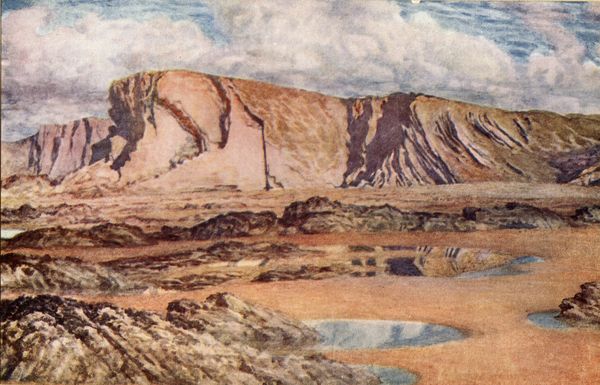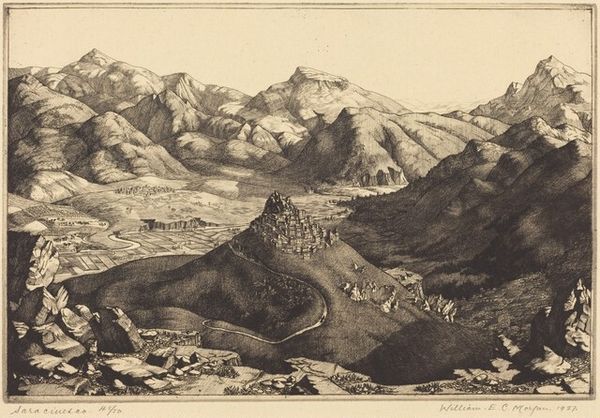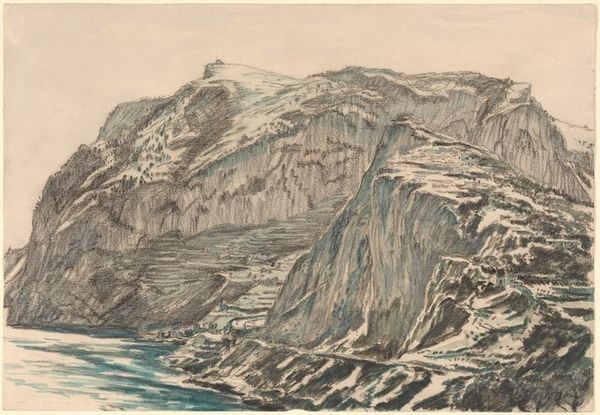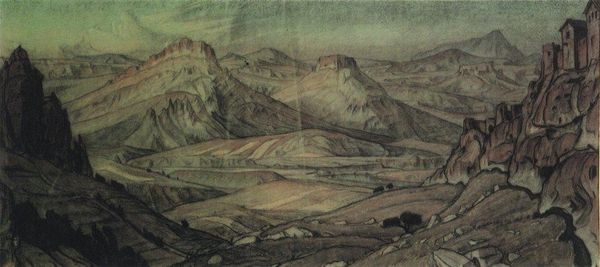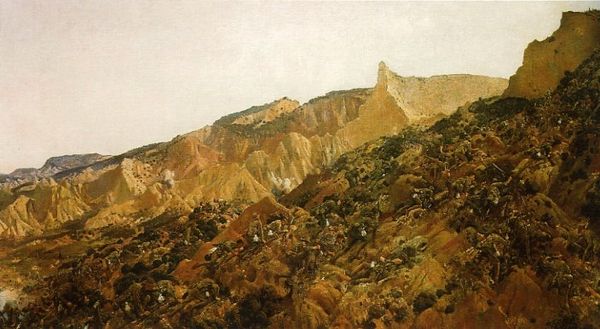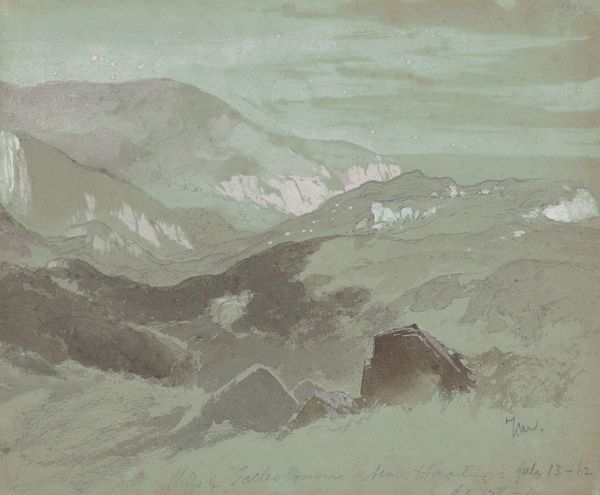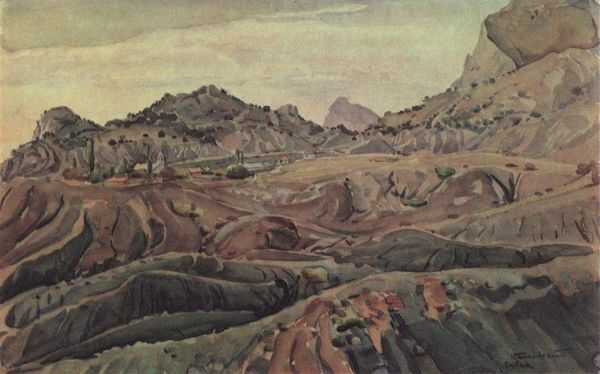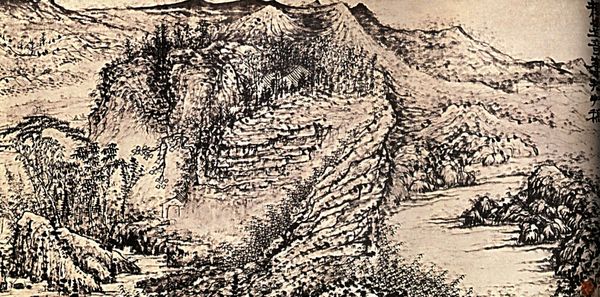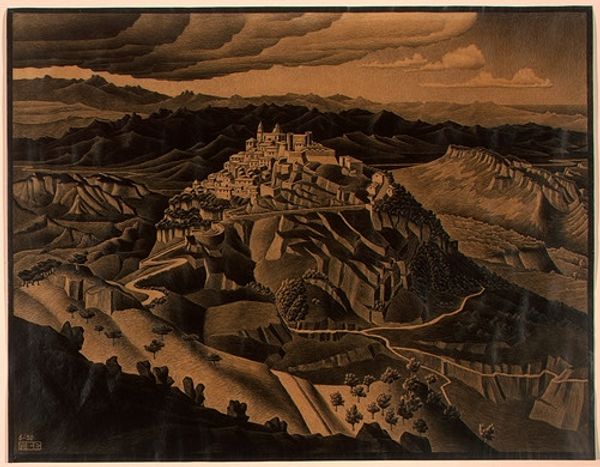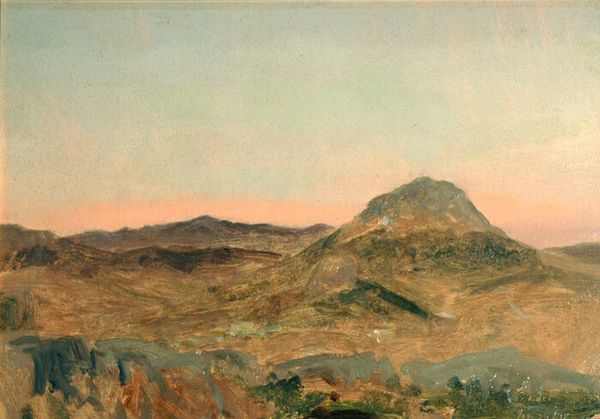
drawing, pencil
#
drawing
#
pencil sketch
#
landscape
#
geometric
#
mountain
#
pencil
#
mixed medium
#
watercolor
#
realism
Copyright: Public domain
Editor: This is Konstantin Bogaevsky's "Mountain Landscape" from 1925, created with pencil and watercolor. The monochromatic palette creates a rather somber mood. How do you interpret this work from a formalist point of view? Curator: The visual elements are fascinating. Note how the artist uses geometric forms to depict the mountains. The composition itself is structured in layers, with the foreground mountain dominating the viewer's immediate perception. What strikes you about the use of line? Editor: Well, the lines seem to define the forms and textures, creating a sense of depth despite the limited color range. There's a sort of rhythmic quality to the lines following the contours of the landscape. Curator: Precisely. And consider the interplay between the pencil drawing and watercolor washes. The pencil work provides a structural framework, while the watercolor softens the edges, adding atmosphere. Do you think this contrast enhances the landscape's visual impact? Editor: Absolutely! It brings an almost surreal quality to the depiction. Like reality seen through a veil. What stands out is the calculated nature of the work and not any desire to exactly replicate the mountain, or to inspire awe for nature. Curator: An astute observation. We should always return to the work itself, its forms, colors and lines, so the meanings can present themselves more completely. I learned from you today how powerfully the artist balanced stark, linear precision and diffused applications of pigment. Editor: Likewise! Thinking about this as more than just a pretty picture has opened a new pathway into analysis for me.
Comments
No comments
Be the first to comment and join the conversation on the ultimate creative platform.
